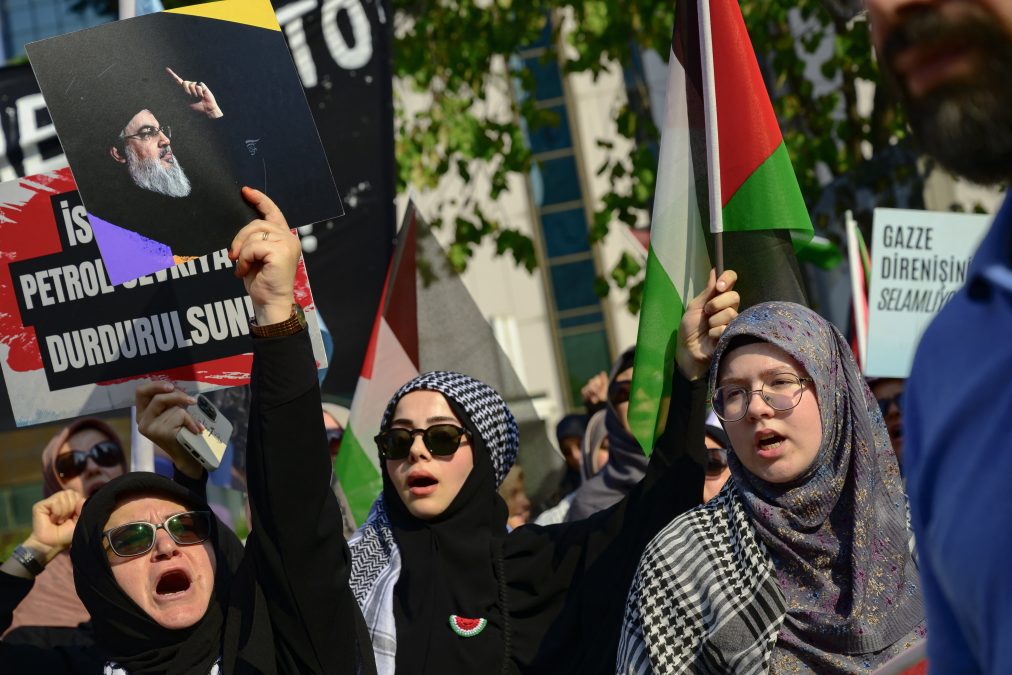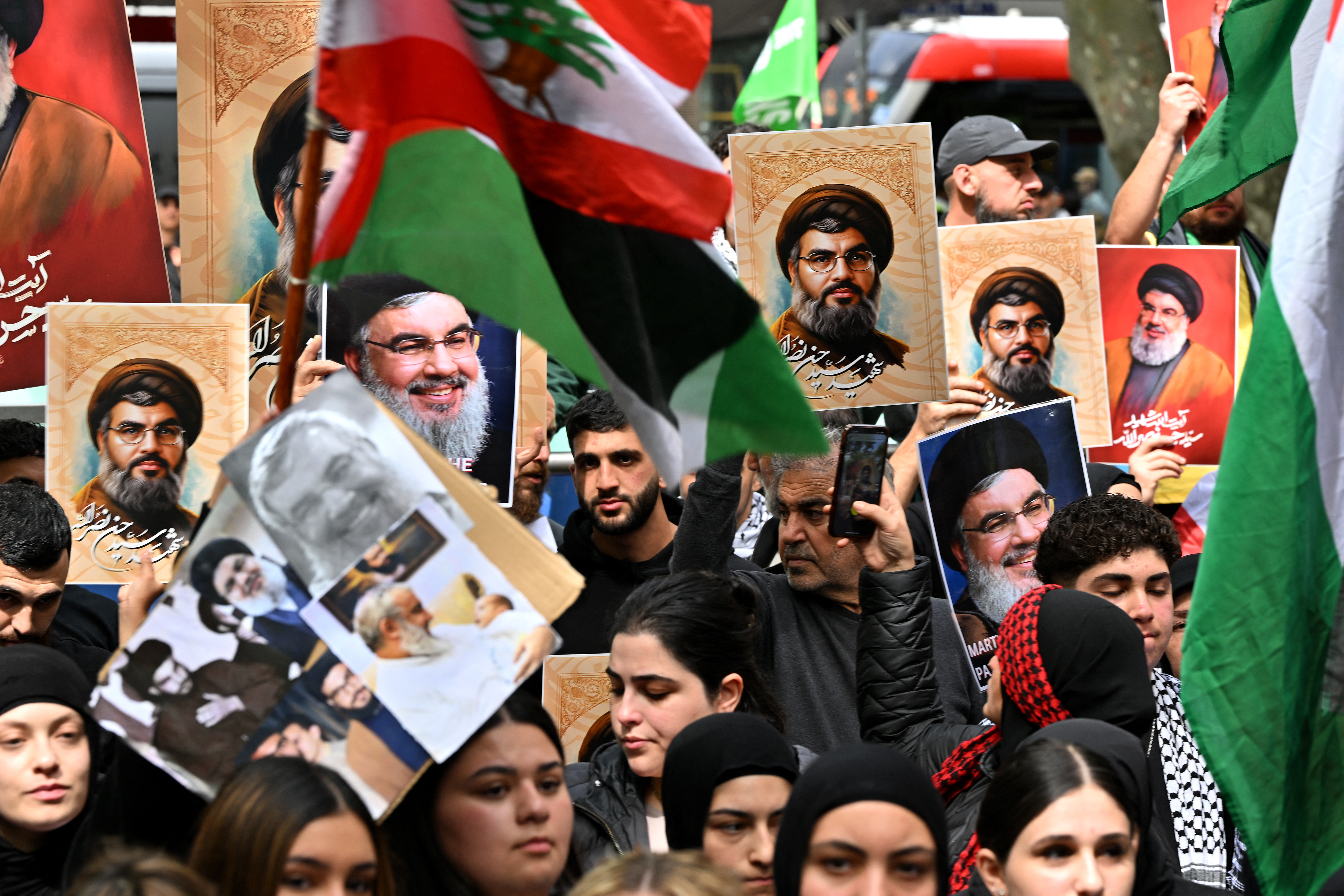Jerusalem — Israel’s killing of Hezbollah chief Hassan Nasrallah in an air strike on Friday was a feat of spycraft capping days of operations highlighting its deep infiltration of the Iran-backed group.
Here’s what we know about how Israel marshaled its intelligence resources to pull off the attack:
1) Hezbollah began firing into northern Israel the day after its ally Hamas staged the October 7 attack on southern Israel, triggering the ongoing war in Gaza.
Israel’s relatively low-level campaign against Hezbollah escalated dramatically on September 17 with sabotage attacks on pagers used by Hezbollah, followed the next day by explosions targeting the group’s two-way radios.
Exploding devices, which Israel has not claimed, killed at least 39 people, wounded almost 3,000 and “threw Hezbollah’s communications back to the stone age”, wrote Robert Satloff of the Washington Institute for Near East Policy.
Analysts said the operation reflected huge strides by Israel’s Unit 8200 signals intelligence group in penetrating Hezbollah’s communications devices.
In February Nasrallah himself warned that “the cell phone that you hold in your hand is a spying device”, prompting use of the pagers that were later weaponized.
Yet military spokesman Lieutenant Colonel Nadav Shoshani told journalists the intelligence-gathering that led to Friday’s Beirut strike on Nasrallah went back years.
“We had used the intelligence we’ve been working for years to gather, and we had real-time information, and we carried out this strike,” he said.
Retired Colonel Miri Eisen, a senior fellow at Israel’s International Institute for Counter-Terrorism at Reichman University, also said the strike was the product of extensive work.
“Israel’s capabilities when it comes to Hezbollah show the depth of the intelligence infiltration into Hezbollah lines,” she said, adding these were “not things that were invented in the last 11 months” after Hezbollah began striking the north.
2) Israeli officials have said Nasrallah and other Hezbollah leaders gathered on Friday for a meeting at the group’s “central headquarters” in its main stronghold, located in Beirut’s southern suburbs.
Warplanes had been pounding the area extensively as Israel ramped up operations against Hezbollah.
A military video showed F15 jets taking off from Hatzerim Airbase on Friday to carry out the operation.
Just before 6:30 pm (1530 GMT) the sound of powerful explosions was heard across the Lebanese capital.
The Wall Street Journal reported that Israel spent months planning how to use “a series of timed explosions” in the bunker beneath residential buildings where Nasrallah would be, “with each blast paving the way for the next one”.
But the paper also cited Israeli officials as saying the strike’s timing “was opportunistic, coming after Israeli intelligence learned about the meeting hours before it occurred”.
It coincided with the UN General Assembly, meaning Prime Minister Benjamin Netanyahu was out of the country at the time.

His office would later publish a photograph it said showed him approving the strike, which The Times of Israel said was apparently taken “at his hotel in New York”.
Israel has not specified the weaponry used in the strike.
However, the New York Times said analysis of a military video indicates the aircraft used had been “fitted with at least 15 2,000-pound bombs”.
Senior officials told the paper that “more than 80 bombs were dropped over a period of several minutes to kill” Nasrallah. The Wall Street Journal said Israel hit the bunker with “80 tons of bombs”.
3) The air strikes left craters up to five meters (16 feet) across, AFP photographers said.
Lebanon’s health ministry gave a preliminary toll of six dead and 91 wounded in the raid.
Middle East expert James Dorsey said there was no question that the strike represented a “very sophisticated” intelligence coup.
“It demonstrates not only significant technological capacity but just how deeply Israel has penetrated Hezbollah,” he said.
Heiko Wimmen of the International Crisis Group said the long-term effects on Hezbollah’s operations were unclear.
“While Hezbollah is too well-institutionalized to collapse by decapitation, the staggering loss of its human resources will inevitably have a degrading effect sooner rather than later,” said Wimmen, the think tank’s project director for Iraq, Syria and Lebanon.
“Their extensive intelligence infiltration also makes it doubtful that they can launch a strategic response or keep up the rocket attacks on northern Israel for much longer.”
For now, Israeli officials are celebrating Nasrallah’s death while weighing whether to press on with ground operations intended to tackle the threat posed by Hezbollah along the northern border.
The military on Saturday distributed a transcript quoting the commander of the squadron that struck Nasrallah as saying “We will reach everyone, everywhere.”








